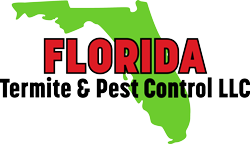From ancient societies to contemporary folklore, ants have intrigued, inspired, and, at times, invaded. Early agricultural societies saw them as both fascinating and useful, recognizing their knack for working in unison. Many cultures came to value them as emblems of industriousness, community, and persistence. For example, ancient Egyptians etched ant-like patterns in their art to capture the essence of their hardworking nature. While revered, they have also been viewed as creatures that disrupt human spaces. This mix of admiration and aversion has carried through to modern times, with residents grappling with their presence in both home and garden.
Throughout history, stories have colored various cultures, often with a mystical twist. The Greek myth of the Myrmidons recounts people transformed into ants, gaining traits of loyalty and relentless work. Similarly, Native American tales portray them as symbolic animals, embodying patience and cooperation, yet cautioning against their entry into sacred or ceremonial spaces. Some Southeast Asian legends take an ominous turn, seeing ant invasions as a sign of coming adversity.
The area’s climate supports a thriving population, and several species are especially common here.
- The Argentine ant, small but resilient, is one of the most frequently spotted. Known for its seemingly endless colonies, They spread quickly, taking advantage of damp environments in kitchens and bathrooms.
- Fire Ants, on the other hand, come with a fiery reputation. Recognizable by their reddish hue and aggressive nature, they defend their territory, making encounters painful and memorable.
- Ghost ants add an air of mystery; their translucent appearance makes them challenging to spot, and they prefer sugary food sources, frequently turning up in pantries.
Detecting An Ant Problem
Knowing when they have established a colony indoors can be surprisingly tricky. Their trails are a telltale sign—these lines often lead from entry points to food or water sources, sometimes hidden along baseboards or under counters. Small piles of dirt or displaced material around cracks in walls or flooring can indicate a nesting site. Spotting them inside during the cooler months can also hint at an indoor infestation, as they typically seek out warmth and protection. A careful look near windows, doors, or tiny crevices in your home’s exterior might reveal where they’ve found their way inside. With these early signs, homeowners can act quickly to avoid a more significant invasion.
For many, an encounter can lead to the question: do they bite or sting? While some species only nibble in self-defense, fire ants are the real aggressors. Their sting is not only painful but can cause a burning sensation and persistent itching, a result of their venomous defense mechanism. Others, like the Carpenter Ant, may bite if disturbed, but their bite lacks the sting’s intensity. The ghost and Argentine ants are generally non-aggressive and unlikely to bite unless severely threatened. The variation in responses across species makes it essential to identify who you’re dealing with, particularly when pets or small children may be at risk.
While ants are not generally associated with the same level of health risk as some other pests, they can still carry bacteria that pose issues for homes and businesses. Those foraging in garbage or unsanitary areas, can pick up pathogens like salmonella or staphylococcus. Once inside, they may transfer bacteria onto countertops, dishes, or food items. This risk is particularly relevant in restaurants and food preparation areas, where infestations can be more than just a nuisance. In residential settings, homeowners who take food safety seriously might consider professional pest management as a way to keep surfaces clean and family members out of harm’s way.
Ants don’t just intrude—they can cause real disruptions. For homeowners, ants rummaging through pantries or setting up colonies near plumbing fixtures can become a persistent problem. Carpenters take this one step further, tunneling into wood and weakening structures over time. For businesses, the implications can be broader. A restaurant facing an invasion may find itself dealing with health code violations, while businesses with visible problems risks damaging its reputation. One or two customer complaints can lead to unfavorable reviews or potential losses.
Many turn to DIY methods, but this often yields limited success. Store-bought sprays and traps typically address the surface issue but fail to eliminate the colony. Even if a DIY solution seems effective at first, many methods miss hidden nests or inaccessible pathways, allowing the problem to resurface. Additionally, improper use of pest control products can pose health risks, especially in homes with children or pets.
Protect your home from unwanted invaders with Florida Termite and Pest Control. Our expert team provides reliable, targeted solutions to keep your space secure and pest-free. Contact us today and take the first step towards a healthier, pest-free environment.
Frequently Asked Questions About Ants
Q1: Do ants sleep, and if so, how?
A1: Yes, they sleep, but not like humans. Workers take hundreds of tiny naps throughout the day and night, each lasting only a few minutes. These "power naps" keep them energetic and productive, ensuring their colony’s tasks—like foraging, defending, and caring for larvae—are continuously managed.
Q2: Can ants teach each other skills?
A2: Yes, they use a process called "tandem running," where an experienced ant guides a novice to a food source. The leader slows down to help the follower learn the route. This rare behavior in insects demonstrates their capacity for cooperation and knowledge-sharing within the colony.
Q3: Are there some that self-destruct when threatened?
A3: Some, like the Malaysian "exploding ants," use a self-sacrificing defense mechanism. When threatened, they rupture their bodies to release a sticky, toxic substance, which immobilizes attackers. This unusual and extreme strategy highlights how some protect their colonies at great personal cost.
All Rights Reserved | Florida Termite and Pest Control
